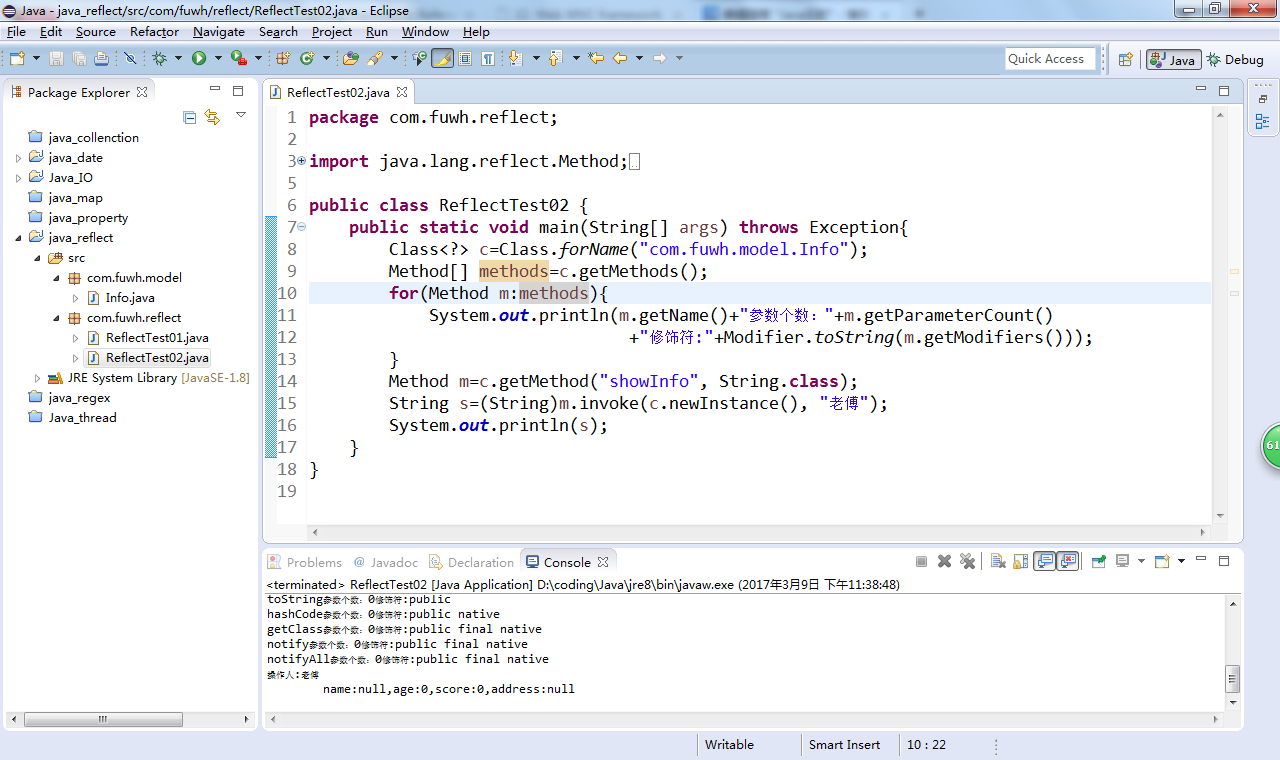Java反射在平常开发中虽然基本上用不着,但是在框架中,基本上都是通过反射来实现,比如说:Sping中来实现IOC。
通过反射,我们可以在运行时获得一个类的所有属性和方法,通过任意一个对象,可以调用它的任意属性和方法。
在Java反射中,一切都起源于Class类。此类的定义如下:
public final class Class<T> extends Object implements Serializable,GenericDeclaration,Type,AnnotatedElement
此类没有构造方法,要想实例化此类,可以通过
·类.class
.类.getClass()
·静态方法forName(String className)
实例:

package com.fuwh.reflect; public class ReflectTest01 { public static void main(String[] args) throws Exception{ String s=new String("hello"); Class<?> c1=s.getClass(); System.out.println(c1.getName()); Class<?> c2=Class.forName("java.lang.String"); System.out.println(c2.getName()); Class<?> c3=String.class; System.out.println(c3.getName()); } }

通过反射,我们可以不用new一个对象,而取得该类的对象,使用该对象,实现操作。
实例:

package com.fuwh.model; public class Info { private String name; private int age; private int score; private String address; public Info() { super(); } public Info(String name,int age,int score,String address) { this.name=name; this.age=age; this.score=score; this.address=address; } public String getName() { return name; } public void setName(String name) { this.name = name; } public int getAge() { return age; } public void setAge(int age) { this.age = age; } public int getScore() { return score; } public void setScore(int score) { this.score = score; } public String getAddress() { return address; } public void setAddress(String address) { this.address = address; } public String showInfo(String title){ return "操作人:"+title+" name:"+name+",age:"+age+",score:"+score+",address:"+address; } }

package com.fuwh.reflect; import java.lang.reflect.Method; import java.lang.reflect.Modifier; public class ReflectTest02 { public static void main(String[] args) throws Exception{ Class<?> c=Class.forName("com.fuwh.model.Info"); Method[] methods=c.getMethods(); for(Method m:methods){ System.out.println(m.getName()+"参数个数:"+m.getParameterCount() +"修饰符:"+Modifier.toString(m.getModifiers())); } Method m=c.getMethod("showInfo", String.class); String s=(String)m.invoke(c.newInstance(), "老傅"); System.out.println(s); } }

